Welcome to BungeeCity.com, where we dive deep into the fascinating world of ocean creatures! In today’s blog post, we’re going to explore the ultimate question: “What eats octopus?” Prepare to be amazed as we unveil the top 12 octopus predators that lurk beneath the waves.
From the mighty whales to the playful dolphins, and even the sneaky saltwater crocodiles, these ocean dwellers have developed quite the taste for our eight-armed friends. But it doesn’t stop there! Seals, eels, sharks, and even sea otters are all part of the octopus’s menu. Who knew they had such a wide range of admirers?
But wait, there’s more! Did you know that wandering albatrosses and common shags also have a hankering for some octopus delicacy? And yes, even penguins and sea lions make the list of formidable predators. It’s a real oceanic showdown out there!
As we delve into the depths of this topic, we’ll also uncover the fascinating defense mechanisms that octopuses have developed to outsmart their hungry adversaries. Get ready to be amazed by their cunning camouflage and remarkable ability to escape even the most determined attackers.
So, grab your snorkel and get ready to dive into the thrilling world of octopus predators. Whether you’re a sea enthusiast or simply curious about the wonders of the ocean, this blog post is sure to satisfy your hunger for knowledge. Let’s embark on this adventure together and discover the incredible creatures that share the underwater world with our clever cephalopod friends.
Who’s Hungry for Octopus?
Imagine being an octopus, a master of disguise and one of the most intelligent creatures in the ocean. With your eight flexible arms, you navigate the deep sea, deftly avoiding dangers and seeking out your next meal. However, despite your impressive abilities, you are not at the top of the marine food chain. There are predators lurking in the depths, ever hungry and hunting. These predators are as diverse as they are voracious, ranging from other sea creatures to birds and even humans.
Octopuses, despite their cunning intelligence and unique defense mechanisms, serve as a vital link in the aquatic food web. Their predators, in turn, contribute to maintaining the balance in our oceans. Let’s dive in to discover the top 12 predators of the octopus.
| Rank | Predator | Remarks |
|---|---|---|
| 1 | Humans | Octopuses are a delicacy in many cultures. |
| 2 | Whales | Whales, particularly sperm whales, are known to consume octopuses. |
| 3 | Dolphins | These intelligent mammals occasionally include octopuses in their diet. |
| 4 | Saltwater Crocodiles | These formidable reptiles can easily tear an octopus apart. |
| 5 | Seals | Seals, especially the Weddell seal, are known octopus eaters. |
| 6 | Conger Eels | Conger eels are fierce predators with a taste for octopuses. |
| 7 | Sharks | While sharks can find octopuses challenging to catch, they do feature in their diet. |
| 8 | Sea Otters | Sea otters are known to eat octopuses, often using rocks to break open their prey. |
| 9 | Wandering Albatrosses | These seabirds occasionally dive for octopuses, especially juveniles. |
| 10 | Common Shags | Like the wandering albatrosses, these birds also prey on octopuses. |
| 11 | Penguins | Some penguin species, like the Galapagos penguin, eat octopuses. |
| 12 | Sea Lions | Sea lions are known to enjoy the occasional octopus meal. |
While it might seem that life as an octopus is fraught with danger, remember that these fascinating creatures are not merely prey. They are survivors, equipped with an array of defense mechanisms that will be explored in the next section. The drama of the deep sea continues, so stay tuned as we delve further into the life of the octopus.
1. Humans
We humans, with our curiosity and adventurous palates, have found ourselves at the top of the octopus food chain. This fascinating creature, with its intelligence and armfuls of allure, isn’t just a spectacle beneath the waves; it’s a delicacy on our dinner plates. From the bustling markets of Tokyo to the vibrant eateries of Lisbon, the octopus is served in a multitude of tantalizing ways.
In Japan and Korea, the octopus has a significant role in the culinary world. Take, for example, takoyaki – a much-loved Japanese street food showcasing octopus chunks nestled in batter balls, or sannakji, a Korean delicacy of live octopus. Meanwhile, halfway across the globe, in the sun-kissed Mediterranean countries of Greece, Spain, Portugal, and Turkey, octopus is a star ingredient in many traditional dishes, often grilled and doused with olive oil and fresh herbs.
Even in the turquoise waters of the Maldives and Mauritius, where the octopus shares its home with a myriad of other marine creatures, it is hunted and savored in a variety of local dishes. And let’s not forget the United States, where octopus has gained popularity in recent years, with adventurous foodies and top chefs alike embracing this marine marvel.
However, it’s not all about gastronomic endeavors. The consumption of octopus is wrapped in controversy, as there’s growing concern about the ethical implications of eating such a highly intelligent creature. A burgeoning wave of activism highlights the potential capacity of octopuses to feel pain, igniting debates and encouraging a reevaluation of our relationships with these eight-armed denizens of the deep.
So, the next time you see octopus on a menu, remember: this isn’t just food, it’s a creature that plays a crucial role in the marine ecosystem and, quite possibly, experiences the world in ways we’re yet to fully understand.
2. Whales
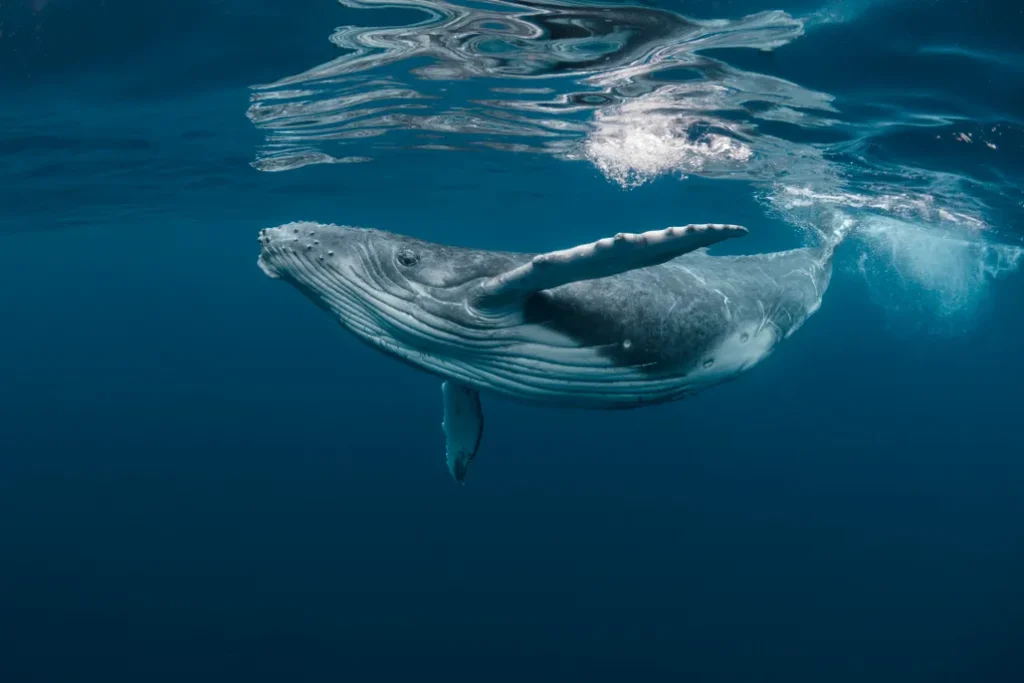
whale
In the deep, blue expanse of the ocean, another of the octopus’s natural predators lurks: the formidable whales. To be more precise, it is the toothed whales that have a penchant for octopuses, making them among the top-tier octopus predators. They thrive in the aquatic food chain by consuming a variety of oceanic creatures, and our eight-armed friends are no exception.
Read more: Which 5 Animals Boast the Most Mesmerizing Purple Eyes? See Their Stunning Pictures!
Among these toothed whales, the sperm whales, beaked whales, and white whales are particularly known for preying on octopuses. These mammoth creatures, armed with their sharp teeth, dive into the ocean’s depths, hunting for their next meal. The octopus, despite its intelligence and agility, often falls victim to these underwater giants.
“It’s a survival game out there in the ocean, and toothed whales have evolved to be efficient hunters, with octopuses being a part of their diverse diet.”
However, not all whales share this dietary preference. The baleen whales, a different subgroup within the whale family, primarily subsist on plankton. Despite their enormous size, these gentle giants filter tiny creatures from the water using their baleen plates, ignoring larger prey like octopuses.
So, while the toothed whales partake in the game of predator and prey with the octopus, their baleen counterparts choose a more peaceful, plankton-filled path. This notable distinction in feeding habits among whales is a fascinating testament to the diversity of marine life and its complex food chains.
3. Dolphins: The Aquatic Strategists
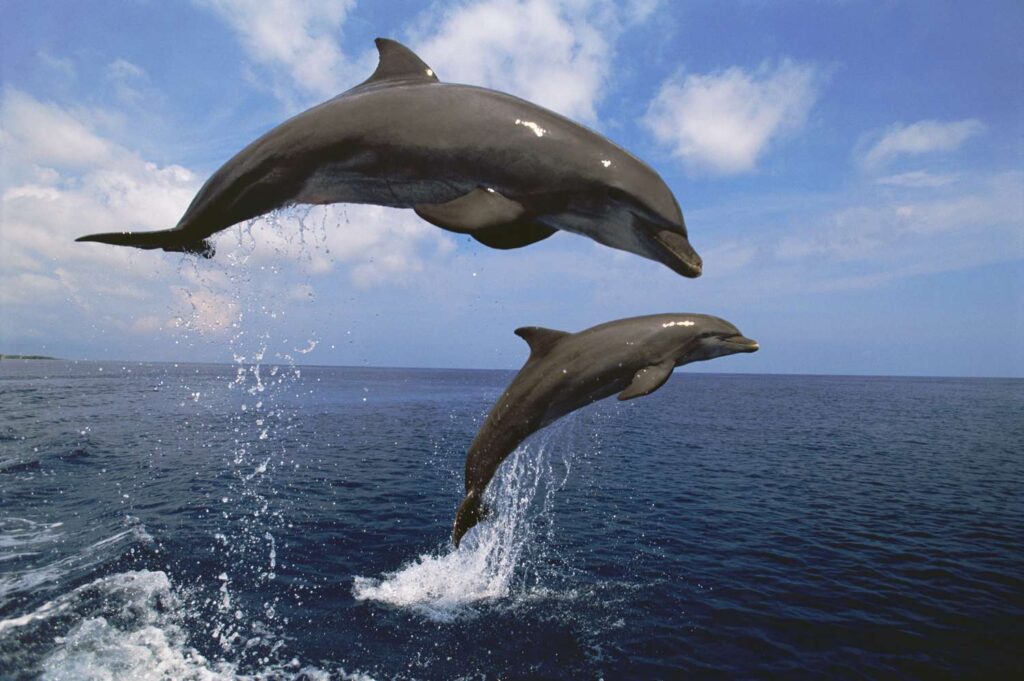
dolphin
As you plunge deeper into the intricacies of this underwater world, you’ll discover that dolphins, revered for their intelligence and hunting finesse, hold a coveted spot on the list of octopus predators. Don’t let the playful flips and charismatic smiles fool you, these aquatic mammals are more than just entertainers – they are indomitable hunters with a taste for octopus, among other marine delicacies.
Their hunting techniques are a testament to their intelligence, showcasing a perfect blend of power, precision, and strategy. When it comes to indulging in octopus, dolphins have masterfully developed two primary methods. The first involves thrashing the octopus around, using their strength and agility to tear their prey into manageable pieces. Quite a sight to behold, but not for the faint-hearted!
“Dolphins, behind their reputation as adorable entertainers, are efficient predators and octopus is not off their menu.”
The second method is a spectacle of its own, where the dolphin flings the octopus in the air. This tactic not only stuns and kills the octopus but also breaks down their bodily structures, making them easier to consume. Such tactics are not just about filling their stomachs but are also a display of their adaptability and intelligence, serving as a reminder of the intricate and complex dynamics of the underwater food chain.
From toothed whales to the agile dolphins, the oceanic world is filled with fascinating creatures, each with its unique hunting techniques, preying on the versatile octopus. As we venture further into this marine exploration, we’ll discover more exciting predators, each with their unique strategies and tastes.
4. Saltwater Crocodiles
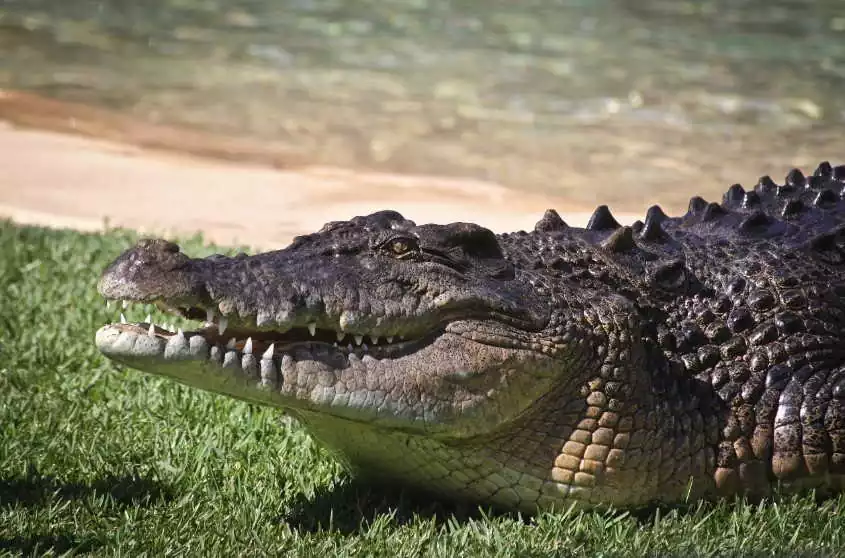
saltwater crocodiles
Sailing across the ocean, we are now venturing into the realm of the world’s largest living reptiles: the saltwater crocodiles. With a swagger that only a top predator can possess, these formidable reptiles are known to gobble up a wide variety of prey, including our eight-armed friends, the octopuses.
Did you know that the saltwater crocodile holds the record for the strongest bite ever measured in the animal kingdom? Imagine the sheer power needed to crunch down on hard-shelled prey! This brute force makes the saltwater crocodile a truly intimidating foe for the soft-bodied octopus.
“The saltwater crocodile’s bite is not just a nip. It’s a demonstration of raw power that can tear even the toughest of shellfish apart. The octopus, sadly, doesn’t stand a chance,” says marine biologist Dr. Jane Little.
Once the crocodile has its sights set, there’s little the octopus can do to evade capture. The crocodile’s powerful jaws snap shut with such velocity that the octopus hardly has time to react. It’s a swift, brutal encounter that typically ends in favor of the crocodile.
Of course, such interactions are not the norm in the vast expanse of the ocean. Saltwater crocodiles are primarily found in regions of the Indo-Pacific, which means only certain species of octopuses need to worry about these monstrous predators. Yet, for those that do cross paths with a saltwater crocodile, it’s a truly fearsome encounter they’d rather avoid.
With the terrifying image of a saltwater crocodile in mind, let’s continue our journey through the world of octopus predators...
5. The Cunning Seals
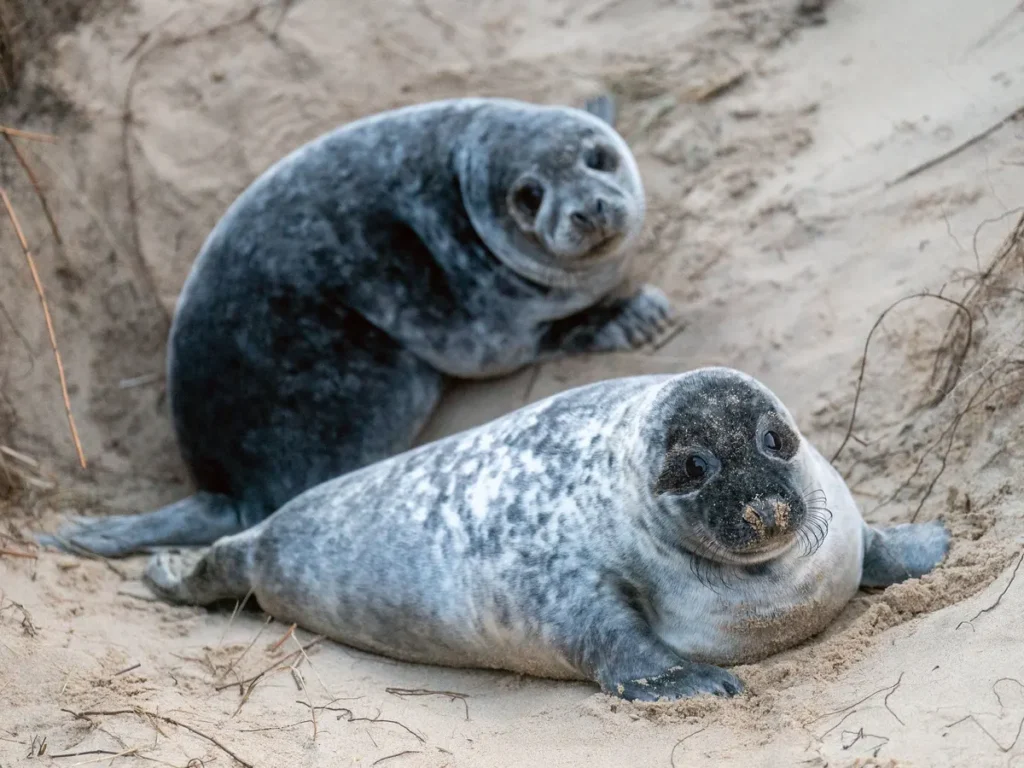
seales
Among the myriad predators of the deep sea, the seal, particularly the Weddell seal, stands out as a formidable adversary of the octopus clan. These semi-aquatic carnivores, blessed with a keen sense of hunting and a diet rich in variety, have a special taste for octopuses, making the latter a significant part of their gastronomic repertoire.
Picture this: a seal, poised on the ocean floor, eyes locked onto its potential meal – an unsuspecting octopus. The chase begins. The seal darts through the water, its lithe body weaving effortlessly around the underwater obstacles.
Once the seal gets hold of the octopus, the real challenge starts. Octopuses are not exactly the tenderest of meals. Their body, though soft and gelatinous, becomes a tough morsel when consumed without proper preparation. Here, the seal’s ingenuity kicks in. Using the environment to its advantage, the seal adopts a peculiar method to make the octopus more palatable. It flings the octopus into the air or slams it against hard surfaces, tenderizing the meal before consumption. In this way, the octopus, despite its robust structure, succumbs to the seal’s clever tactics.
Check out: Which Yellow Birds in California Will Mesmerize You? Discover the Top 9 with Stunning Pics!
The spectacle of the seal’s hunting ritual is a stark reminder of the relentless and complex dynamics of the underwater food chain. The seal’s ability to adapt and overcome the challenges posed by its prey is a testament to the intricacies of nature’s design. Indeed, in the world beneath the waves, the battle for survival rages on, with the seal as a formidable player.
6. Conger Eels
Emerging from the depths of the ocean, sliding through the rocky crevices, the Conger Eel presents a fascinating spectacle of underwater predation. These elongated creatures are one of the unsung predators of octopuses, often overshadowed by the more famed hunters like sharks or seals. Yet, their predatory prowess should not be underestimated.
Conger eels are known for their fierce nature and jaw power. In their pursuit of food, they often show a striking level of aggression, even towards larger creatures. They are known to attack humans, capable of inflicting severe bites. Their primary diet consists of shrimps and crustaceans, but they do not shy away from the opportunity to partake in some octopus delicacy.
But what makes these underwater serpents particularly interesting is their shared diet with their prey. Yes, you read that right! Both conger eels and octopuses share an appetite for shrimps and crustaceans. This shared dietary preference brings them into direct competition, adding another layer of complexity to the underwater food chain dynamics.
So, the next time you marvel at the underwater world, remember the Conger Eel. A predator that lurks in the shadows, ready to strike when an unsuspecting octopus ventures too close.
7. Sharks: The Ocean’s Fearless Predators
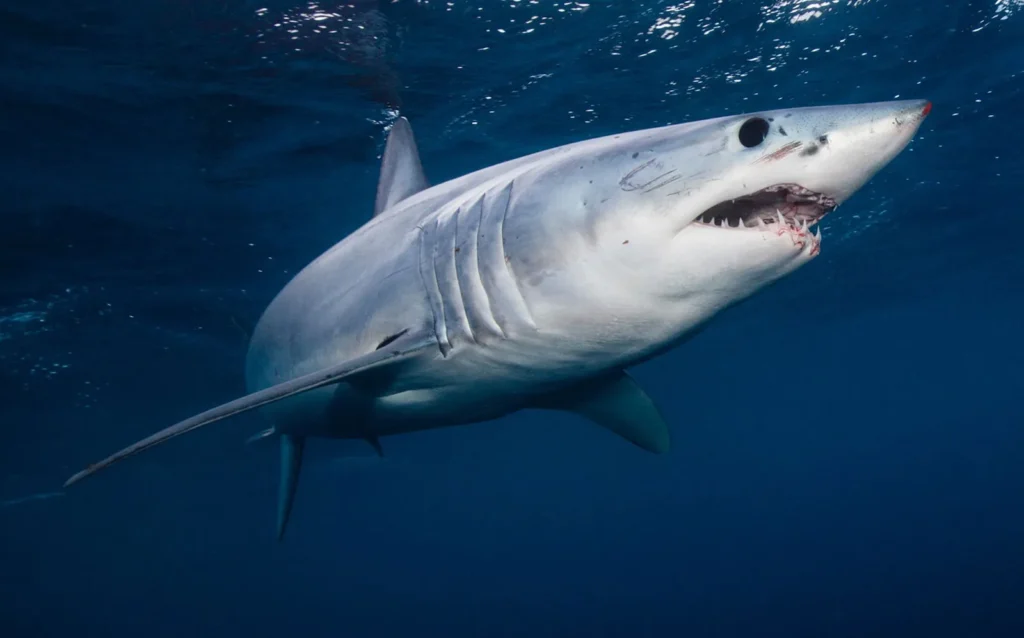
sharks
In the grand theatre of the ocean, where survival is a relentless challenge, the shark emerges as a formidable antagonist in the life of an octopus. Among the vast array of octopus predators, sharks distinguish themselves as the largest and, undoubtedly, one of the most fearsome.
The species of sharks that consider octopuses a part of their menu are as diverse as they are deadly. This includes the swift and sneaky dogfish, the agile whitetip reef shark, the gentle yet deceptive nurse shark, and the iconic hammerhead shark.
“Hunting an octopus is no easy task for a shark. It’s a battle of wits and agility against one of the ocean’s smartest creatures.”
Octopuses, despite being prey, are not helpless victims. Their intelligence and ability to quickly adapt to threats make them a challenging target, even for these apex predators. Picture this: a shark, drawn by the scent of an octopus, begins its hunt. It relies on its superior speed and strength, but the octopus is not an easy prey. It uses its unmatched camouflage abilities, swiftly changing color and texture to blend in with its surroundings. In a blink, it disappears from the shark’s view, leaving the predator baffled and frustrated.
However, there are times when strength and speed triumph over wit. In those instances, the shark’s razor-sharp teeth can easily tear through the octopus’s soft body, ending the underwater chase in a swift, brutal finale. Yet, each encounter between a shark and an octopus is a spectacle of the relentless dance of survival in the ocean’s depths.
It’s important to understand that these encounters aren’t merely about the survival of the fittest. They also highlight the intricate balance of the marine ecosystem, where every creature, from the smallest shrimp to the largest shark, plays a vital role.
So, while sharks pose a significant threat to octopuses, they also contribute to maintaining the delicate balance of life in the ocean, proving once again that nature is a complex web of interconnected relationships.
8. Sea Otters
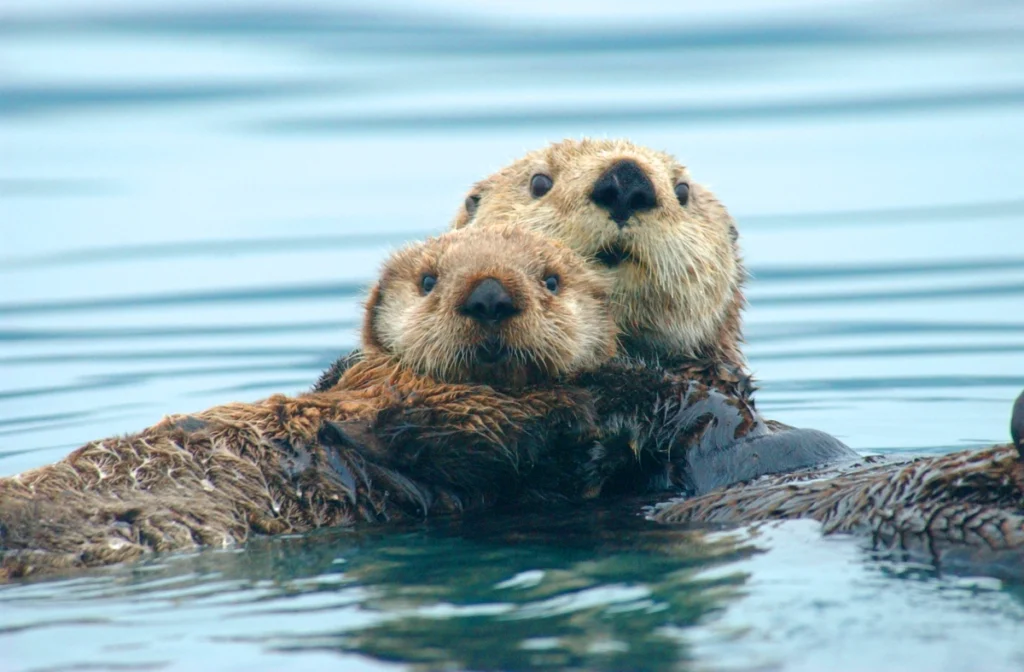
sea otters
From the majestic depths of the North Pacific Ocean, we journey to the playful world of sea otters. In this environment, otters are agile, quick, and intelligent, making them efficient predators. Among their eclectic menu of marine delicacies, octopuses hold a special place.
Endemic to the North Pacific Ocean, these fascinating creatures are not just about cute frolicking and floating lazily on their backs. They are also fierce hunters with an insatiable appetite, driven by their high metabolism. They consume vast quantities of food, and their choice of delicacies is quite diverse. This includes everything from sea urchins, crabs, and snails to the complex and intelligent octopus.
The sea otter’s hunting technique is a marvel in itself. It dives deep into the ocean, using its sharp vision and sensitive whiskers to locate its prey. Once an octopus is within grasp, the otter quickly wraps its powerful forelimbs around it, preventing the octopus from using its notorious escape tactics.
9. Wandering Albatrosses

albatross
Leaving the water’s surface, we soar to the skies with the wandering albatross. These magnificent birds, with the longest wingspan of any bird species, traverse the vast expanse of the Southern Hemisphere, making the ocean their buffet.
While their diet is diverse, including fish and crustaceans, they have a particular preference for octopuses and squid. The albatross’ beak is perfectly designed for catching slippery prey like these. The hooked tip and sharp edges are ideal for gripping and tearing apart their catch.
The wandering albatross’s hunting strategy is a spectacle to behold. They glide effortlessly above the ocean surface, their keen eyes scanning the water for any sign of an octopus. Once spotted, they dive into the water, snatching their prey with precision and speed. The octopus, despite its intelligence and camouflage abilities, often falls prey to the albatross’s prowess.
10. Common Shags
Think of a Common Shag, and the image of an unassuming bird might come to mind. But don’t be fooled by their seemingly ordinary appearance. Also known as green cormorants, these medium-sized seabirds are marvels of the marine ecosystem. They exhibit a fascinating underwater hunting prowess that often goes unnoticed.
Fitted with webbed feet and a powerful beak, Common Shags are aquatic predators with a diverse diet, which includes a variety of fish and crustaceans. However, their culinary repertoire extends beyond these common sea creatures. Yes, you guessed it right! Among the unsuspecting prey of these birds are our eight-armed marvels – the octopuses.
Common Shags, with their agile swimming abilities and swift hunting techniques, are known to prey on octopuses, turning these intelligent creatures into a fulfilling meal. This fascinating predator-prey interaction further adds to the intricate web of the marine food chain.
11. Penguins
Who can resist the charm of a waddling penguin? These adorable birds, clad in their tuxedo-like feathers, are a delight to watch. But beneath their cute exterior lies the heart of a skilled predator, especially when it comes to their favorite seafood.
Penguins are part of the diverse family of cephalopod predators. Yes, that’s right! These birds are not just about fish and krill. They are also known predators of cephalopods, which includes squids, cuttlefish, and our central character – the octopuses.
Using their sharp beaks and swift swimming capabilities, penguins can catch and consume octopuses, making them a vital part of the Antarctic food chain. The enchanting snow-covered landscape of the Antarctic thus hides an intriguing saga of survival, where even the seemingly harmless penguins can turn into formidable predators.
12. Sea Lions
In the vast expanse of the ocean, another formidable predator of the octopus is the sea lion. Belonging to the family of eared pinnipeds, these sea creatures share a close kinship with seals, yet their hunting prowess and behavior set them apart. Unlike their cousins, sea lions possess a unique characteristic – they are not just carnivorous, but their dietary preferences are skewed largely towards a select few sea creatures.
Sea lions have a highly specialized diet, primarily consisting of squids, octopuses, and fish. This makes them a significant player in the marine ecosystem and a direct competitor to other cephalopod predators. When it comes to hunting octopuses, these marine mammals showcase an impressive display of strength and agility.
With their sleek bodies and strong flippers, sea lions are excellent swimmers, effortlessly navigating through the ocean’s depths in pursuit of their prey. They use their sharp teeth and powerful jaws to capture and tear apart their meals, including the elusive octopus. Although octopuses are known for their cunning escape tactics, the sea lion, with its keen senses and relentless pursuit, often emerges victorious.
In the grand scheme of the marine food chain, the sea lion’s preference for octopuses plays a vital role in maintaining the balance. It’s a testament to the intricate dance of survival that plays out beneath the ocean’s surface, a dance in which the sea lion and the octopus are eternal partners.
Unraveling the Mysteries of Octopus Defense Mechanisms
Imagine being a soft-bodied creature in a world teeming with predators. Your survival hangs on a delicate balance. This is the life of an octopus. Yet, they’ve evolved to thrive in this challenging environment. Here’s how.
At first glance, their soft bodies might suggest vulnerability. But this softness is their secret weapon. It grants them extraordinary flexibility, allowing them to pass through seemingly impossible crevices. With a swift jet of water propelled from their mantle, they can escape the clutches of danger in a flash. This is akin to a high-speed underwater jet pack, a marvel of natural engineering.
But their means of survival aren’t solely based on escape. They’ve dabbled in the art of illusion as well. The octopus is a master of camouflage, capable of changing their color and even shape. This transformation is so complete that they become virtually invisible in their surroundings, confounding their predators. A rock, a plant, or even the sandy ocean floor – the octopus can mimic it all.
What about when they’re cornered? Octopuses have a surprising trick up their sleeve. They can release a cloud of ink, a smokescreen that disorients their attackers and conceals their escape. This is not merely a visual distraction; the ink contains a substance that dulls the predator’s sense of smell, making it harder to track the fleeing octopus.
And if all else fails, they can sacrifice an arm to a predator and then regrow it without permanent damage. It’s a survival strategy that’s as dramatic as it is effective. Furthermore, their venomous bite serves as both a hunting tool and a last line of defense against threats.
So, while the octopus might appear to be an easy meal for many marine and terrestrial creatures, capturing one is no simple feat. Their highly developed defense mechanisms, combined with their intelligence, make the octopus one of the ocean’s most fascinating and elusive inhabitants.
It’s a testament to the incredible adaptability of life. These mechanisms have been honed over millions of years, a testament to the relentless, innovative power of evolution. It’s a constant reminder that in the great dining room of the ocean, the octopus is not merely a meal waiting to be had, but a marvel of survival.
Some of the top predators of octopuses include toothed whales such as sperm whales, beaked whales, and white whales, dolphins, seals (especially the Weddell seal), conger eels, sharks (including dogfish, whitetip reef, nurse, and hammerhead sharks), sea otters, wandering albatrosses, common shags, penguins, and sea lions.
Yes, dolphins are known to be efficient predators and octopuses are part of their diet.
In addition to dolphins, other animals that prey on octopuses include toothed whales, seals, conger eels, sharks, sea otters, wandering albatrosses, common shags, penguins, and sea lions.
Yes, octopuses are part of the diet of sea lions, along with squids and fish.

